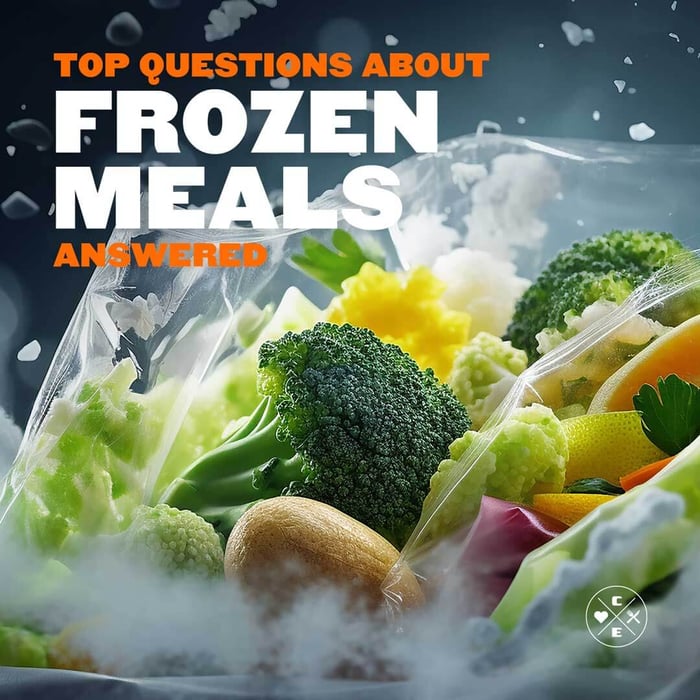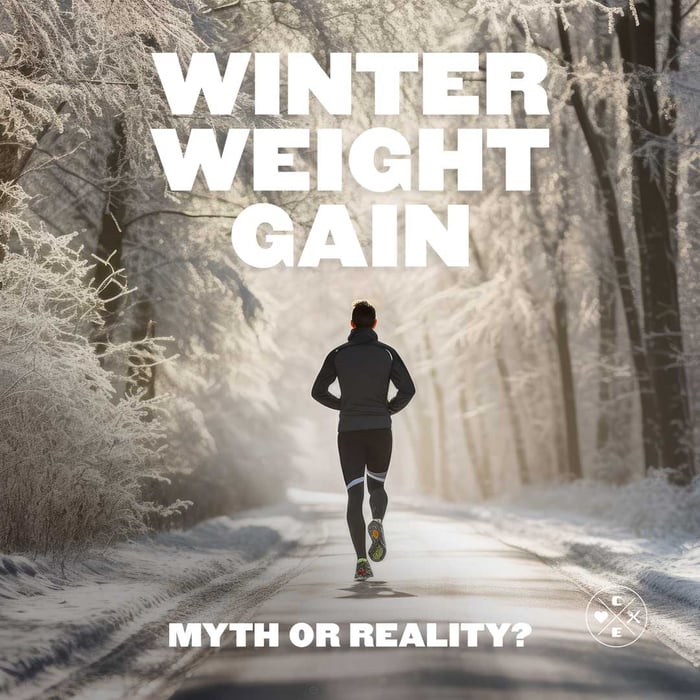Frozen meals are convenient, affordable, and can be nutritious if chosen wisely. Here’s what you need to know:
- Freezing locks in nutrients: Fruits and vegetables are frozen at peak ripeness, often retaining more nutrients than fresh produce stored for days.
- Look for healthy options: Choose meals with under 600mg sodium, less than 4g saturated fat, at least 3g fiber, and 15-20g protein per serving.
- Read labels carefully: Prioritize meals with whole food ingredients, lean proteins, whole grains, and plenty of vegetables.
- Upgrade your meal: Add fresh veggies, whole grains, or lean proteins to boost nutrition and flavor.
Frozen meals can fit into a balanced diet when selected and prepared thoughtfully. Use these tips to make smarter choices and enjoy the convenience without compromising on health.
7 Healthy Frozen Meals High In Protein
Nutrition in Frozen Meals
Frozen meals have come a long way in terms of nutrition. Thanks to advancements in freezing technology, many frozen foods now retain nutrients that might otherwise be lost in fresh foods after extended storage. Research even indicates that frozen foods can often boast higher levels of certain nutrients like vitamin C, antioxidant polyphenols, lutein, and beta-carotene compared to fresh produce stored for several days [3].
How Freezing Impacts Nutrients
Fruits and vegetables used in frozen meals are typically harvested at their peak ripeness and then flash-frozen within hours. This process helps lock in nutrients that might degrade in fresh produce over time. Studies show that frozen produce outperforms fresh in nutrient comparisons two-thirds of the time [3].
"It is like anything else in the supermarket aisles - one needs to pick and choose carefully", says Alice H. Lichtenstein, DSc, director of Tufts' HNRCA Cardiovascular Nutrition Laboratory [3].
While freezing helps preserve nutrients, making informed choices by reading labels ensures you're selecting the healthiest options.
Decoding Frozen Meal Labels
When shopping for frozen meals, keep an eye on these key nutrients:
| Nutrient | Recommended Limits | Why It Matters |
|---|---|---|
| Sodium | Less than 600mg per meal | High sodium intake can affect health |
| Saturated Fat | Under 4g per serving | Linked to heart health and cholesterol |
| Fiber | At least 3g per meal | Aids digestion and keeps you full |
| Protein | 15-20g per meal | Supports muscle health and satiety |
Choose meals with whole food ingredients listed at the top of the ingredient panel. Balanced meals featuring lean proteins, whole grains, and vegetables are ideal [3].
Proper storage is also key - frozen meals should be kept at 0°F or lower to maintain their nutritional quality [2]. When preparing them, opt for cooking methods like steaming to preserve nutrients, and avoid overcooking, which can lead to nutrient loss.
Today’s frozen meal options cater to health-conscious shoppers, with 79% of parents reporting that they find frozen meals to be nutritious choices for their families [1]. By paying attention to nutrient retention and reading labels carefully, frozen meals can fit seamlessly into a balanced diet.
Choosing Healthy Frozen Meals
Frozen meals have come a long way, offering a variety of nutritious options for different diets. Picking the right ones can help you stick to a balanced diet while enjoying their ease and convenience.
Recommended Healthy Frozen Meal Brands
Some brands stand out for their healthier meal options. Clean Eatz Kitchen, for example, offers customizable meal plans, all under 600 calories. Amy's Kitchen is well-known for its organic vegetarian meals, while Sweet Earth focuses on plant-based dishes with global flavors. Lean Cuisine provides portion-controlled options designed for various dietary needs.
Once you've found brands you trust, it’s essential to assess individual meals to ensure they meet your nutritional goals.
Tips for Selecting Meals
Keep these nutritional guidelines in mind when choosing frozen meals:
| Component | Target Range | Why It Matters |
|---|---|---|
| Calories | 300-600 per meal | Helps with portion control |
| Protein | At least 15-20g | Keeps you full and supports muscles |
| Sodium | Under 600mg | Supports heart health |
| Fiber | At least 3g | Aids digestion and promotes fullness |
| Saturated Fat | Less than 5g | Supports cardiovascular health |
Look for meals that feature:
- Whole food ingredients listed first on the label
- At least 1 cup of vegetables
- Lean proteins like chicken, fish, or legumes
- Whole grains instead of refined carbs
Want to make your frozen meal even better? Add extra veggies or whole grains to increase fiber and nutrients without sacrificing convenience.
sbb-itb-1989a25
Using Frozen Meals in Daily Life
Frozen meals can be a convenient part of your routine without giving up on nutrition or variety. With some planning and a few extra ingredients, you can turn them into satisfying, balanced meals that work for your lifestyle.
Pairing Frozen Meals with Fresh Ingredients
Frozen meals work best when treated as a base rather than the entire meal. According to Dr. Ronald Pegg, freezing acts like "nature's pause button" [3], locking in nutrients. In fact, frozen vegetables often retain more nutrients than fresh ones that have been sitting in your fridge for days.
Here are some simple ways to upgrade your frozen meals:
| Add-On Type | Example | Nutritional Boost |
|---|---|---|
| Fresh Veggies | 1 cup steamed broccoli | Extra fiber and vitamins |
| Whole Grains | ½ cup quinoa or brown rice | Complex carbs and protein |
| Lean Proteins | 3 oz grilled chicken or tofu | Protein for satiety |
| Healthy Fats | ¼ avocado or 1 tbsp nuts | Essential healthy fats |
By adding these components, you can transform a quick frozen meal into something more nutritious and filling.
Tips for Customizing and Planning
To make frozen meals work seamlessly in your routine, consider these tips:
- Prep Ahead: Thaw meals overnight in the fridge to improve texture and ensure even heating.
- Mix It Up: Plan for 3-4 frozen meals each week, alternating with freshly cooked dishes for variety.
- Customize Smartly: Add fresh herbs, extra veggies, or a piece of fruit to boost flavor and nutrients.
Frozen meals can be a convenient option as long as they’re part of a diverse diet. This way, you’ll enjoy the ease of quick meals while still meeting your health and taste goals.
Conclusion
Frozen meals can be a convenient and nutritious choice when selected carefully. Let's recap the key points and practical tips for making the most of them.
Key Takeaways
Frozen meals today offer a quick and easy way to enjoy balanced nutrition. Research shows that freezing helps retain nutrients like vitamin C and beta-carotene, often better than fresh produce that's been sitting around too long. To get the most out of frozen meals, look for options that include:
- Whole grains like quinoa or brown rice
- Lean proteins or plant-based alternatives
- A variety of vegetables for added vitamins and minerals
- Low sodium and minimal preservatives
Smart Choices for Frozen Meals
Navigating the frozen food aisle can be simple if you know what to look for. Here's a quick guide to better ingredients and their benefits:
| Category | Best Options | Why It Matters |
|---|---|---|
| Grains | Quinoa, Brown Rice | Provide fiber and steady energy |
| Vegetables | Kale, Sweet Potatoes | Packed with essential nutrients |
| Proteins | Lean Meats, Fish | Help with energy and muscle health |
Pair frozen meals with fresh foods to maintain a well-rounded diet. By following these tips, you can enjoy the convenience of frozen meals without compromising on nutrition.
FAQs
How much sodium is too much in frozen meals?
According to the CDC, frozen meals should ideally have less than 460 mg of sodium, with a maximum of 600 mg to be considered a healthier option. This is crucial because the recommended daily sodium intake for adults is capped at 2,300 mg. Some frozen meals, like certain pizzas, can pack as much as 5,040 mg of sodium - over twice the daily limit.
For the best choice, aim for meals with under 460 mg of sodium. If that's not possible, meals with 460-600 mg are still acceptable but should be balanced with low-sodium foods during the rest of the day. Meals exceeding 600 mg should be avoided.
"Freezing in essence is nature's pause button. It maintains freshness, slows down enzymatic reactions, increases the time it takes anything to degrade." - Ronald Pegg, PhD [3]
Freezing preserves nutrients, but choosing wisely is key. Read labels carefully and opt for frozen meals that prioritize simple, whole food ingredients at the top of the ingredient list.




